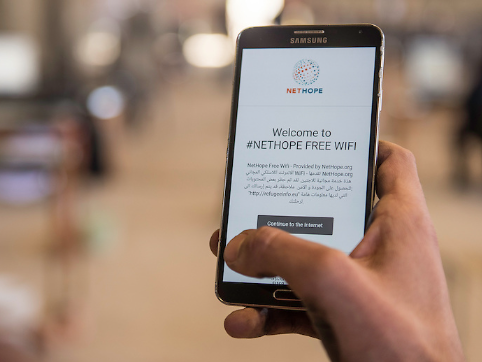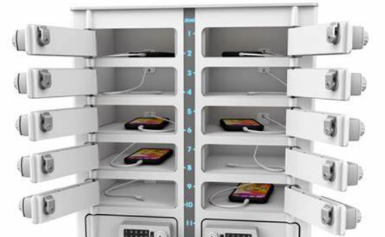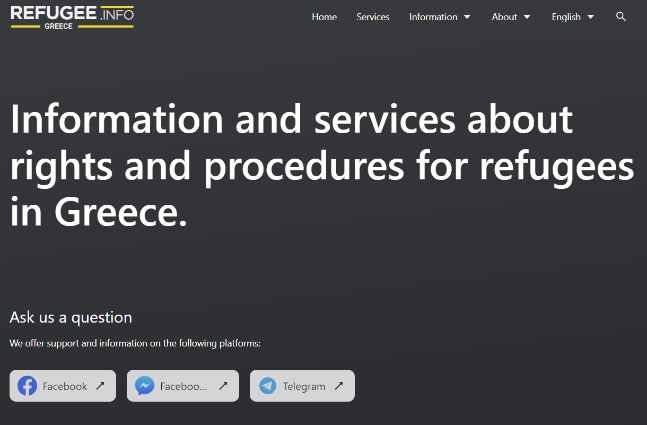Last month, I raised my concerns about how the Humanitarian Sector are pressing ahead with digital solutions but not considering the connectivity infrastructure needed to facilitate it. In this article, I will shine a light on how to build reliable and safe connectivity services for communities.
Setting up public Wi-Fi in public is complex and good planning is essential. Over the past 10 years, the Emergency Telecoms Cluster (ETC), Nethope and other agencies have provided connectivity in refugee settings across the world. I have supported some of these projects and there have been plenty of lessons the ICT community have learnt along the way.
Here is a high-level view on how to deliver a successful service and get it right first time.
Community engagement & assessment
All successful projects must start with the community and other humanitarian actors in mind. Firstly, if digital programming is to be delivered in the setting, early conversations need to be started so that you have a good knowledge about any ICT4D solutions before meeting with community members. From a system design perspective, it’s important to understand how much bandwidth per person is needed for services to operate correctly.
The next step it to meet up with key local people from the communities to understand what sort of devices people use to access the internet, the type of information and services the communities would like to access and the best locations to locate equipment. Permissions may also need to be sought from key people to install equipment.
An important part of community engagement is to explain which services will be delivered. You should also be clear about what services may not be provided. In most projects, there may not be sufficient bandwidth to support entertainment and it’s likely that streaming platforms such as YouTube may be blocked. Managing expectations correctly must be a priority as if services are over promised, communities will become frustrated. Setting expectation correctly in advance will lead to a smooth implementation. Signage in local languages will also help when services are installed.
Right sizing the service
The community assessment will give engineers an idea of how many people will access systems at the same time. Headcount information combined with bandwidth requirements for ICT4D services will help technicians to decide how much total bandwidth will be needed to serve the community. User numbers will also be used to identify the correct technologies to source. Generally commercial equipment will be needed to delivery services rather than the cheaper routers used in domestic settings.
Service availability and positioning services
This is the part of the project where mistakes made could lead to unintended consequences. Firstly, technicians must ensure that Wi-Fi services are equitable. In some refugee settings, there could be multiple communities, so it’s essential that each community has equal access. Organisations may limit providing services in public locations such as libraries or schools where everyone has access, but even in public areas, care must be taken so that Wi-Fi does not cause issues for other services.
In 2021, Wi-Fi was installed in Mahama Camp, Rwanda to provide connectivity to a library building. On the opposite side of the road was the entrance to the clinic. When the service went live, crowds gathered to use the Wi-Fi and obstructed access to the clinic. Fences were soon installed to keep the entrance clear for patient access. So, key lesson learnt from this experience is to be mindful that Wi-Fi will attract a gathering of people where it could cause inconvenience to other services and activities nearby.
One other important factor to consider when locating IT equipment is the security of these systems. Core technologies should be installed in secure locations with access to stable power and Wi-Fi access points placed in locations where they cannot be easily removed.
Power
As part of the system design, stable power must be provided to run the technology. Many sites will have unstable power of in some cases no power at all. Where there is intermittent power, battery backup systems such as UPS will ensure that services will continue during power outages. Renewable energy systems can also be a great solution for securing stable power. Solar energy is very popular, but space will be needed for panels. For locations where space is limited, wind power could be an option to consider if the local climate is suitable.
Think about how the community will be able to charge their devices. In many settings this may not be a problem at all as small shops within the camps may have solar charging which people can access for a small fee. If there are no means for people to charge technology, it is easy to provide USB charging stations as part of the project.
Financial Sustainability
This is the topic where I get very frustrated with some organisations. Over the years I have seen countless examples where expensive equipment is placed in crisis settings. As communities start to use the Wi-Fi, they start to depend on it for communications and education. After a period (normally a year), the service fails because there is no funding for renewing the contract with the internet provider.
In a refugee camp, where NGOs provide water, shelter, and food, they don’t take all this away with no notice. The same ethos must now be applied to all services including Wi-Fi. For me, the lack of budgeting for longer term provision is a massive failure and, in my opinion, if a project cannot be funded for the longer term, it should not be started at all.
The manufacturers of Wi-fi equipment such as Cisco are massively generous with hardware, but generally do not fund connectivity. The telecoms sector could be doing much more in this space to support such projects by providing free of discounted services. They are often massive multinational organisations with the means to afford supporting humanitarian assistance.
In a nutshell, whilst we can deliver great services at pace, more work is needed on the funding side to keep services running beyond the first year!
Internet access limits
Bandwidth to run the Wi-Fi services is some locations can be expensive, especially if satellite technologies are used. With a high volume of users, it will be necessary to limit the number of websites the community can access. As previously mentioned, streaming services such as YouTube are likely to be blocked.
Priority must always be given to essential services which are important to members of the community the project supports.
Refugee.info is a good example of a service that will be of great value to refugees. This website has been created in a wide range of languages to provide communities with information about claiming asylum, accessing health care and many more services. This service has been operating in Greece for many years and has been showcased as a major success.
Education Technology (EdTech) is another important service where Wi-Fi systems have been set up to allow students to access to approved education content. In projects where we support a displaced population, the continuation of education for children is vital. Across Ukraine, there are many of examples of such services where educational content approved by the Ministry of Education is delivered every day.
In the assessment phase of a new project, when engaging local communities, also engage government officials such as Health and Education as well so that services can be provided to support these important thematic areas.
Privacy and security
Next, but possibly most importantly, Wi-Fi services must be designed and delivered with privacy and security always in mind. In many cases the communities we support will have been displaced because of armed conflict. Alongside the physical wars, there is cyber war taking place. Bad actors (some government sponsored) will attempt to hack IT systems being used to support displaced communities. The activities can range from denying access to services to more sinister attempts to get information about people in the community you are supporting.
Cyber Security and data protection must be included into all projects where services are provided to communities. The threat is very real and there is plenty of evidence supporting this.
Gaza, Are we ready to deliver?
As I write this article, war taking place in Gaza where over one million people have been displaced. Before the war, the population in Gaza had regular access to services including Internet.
Famine is building up in Gaza as access for aid agencies is limited. When a ceasefire does take hold, the Aid Sector will need to move in at pace to deliver medical supplies, food, water, and other important non-food items. Alongside these lifesaving services, the community will also need access to digital services and connectivity. As an aid community, are we ready to deliver this?



